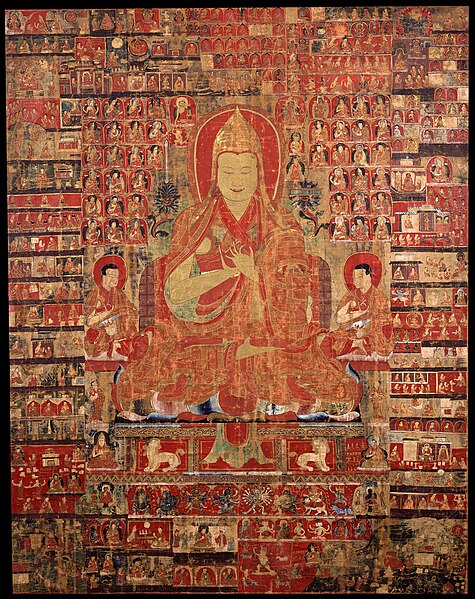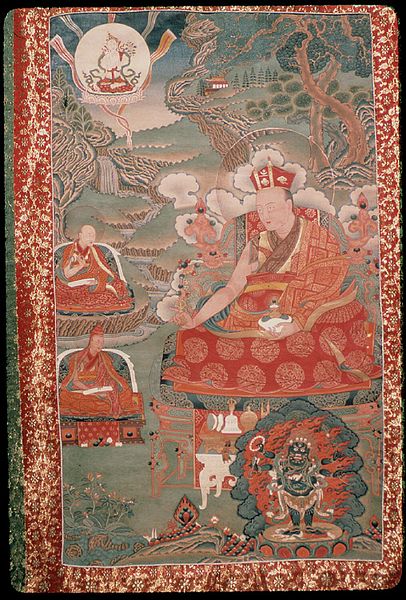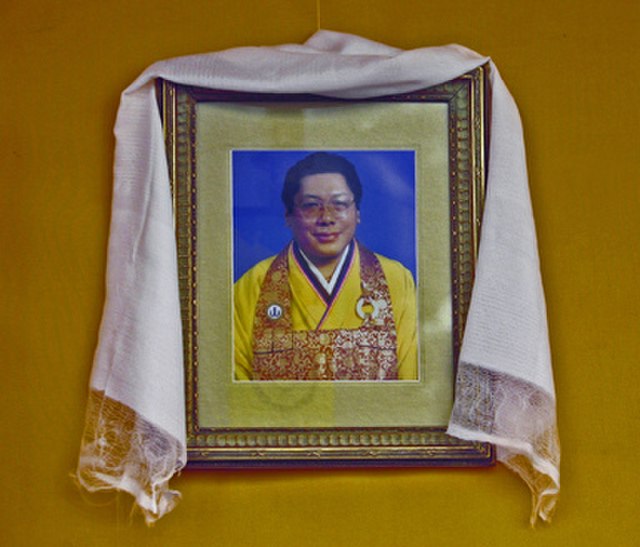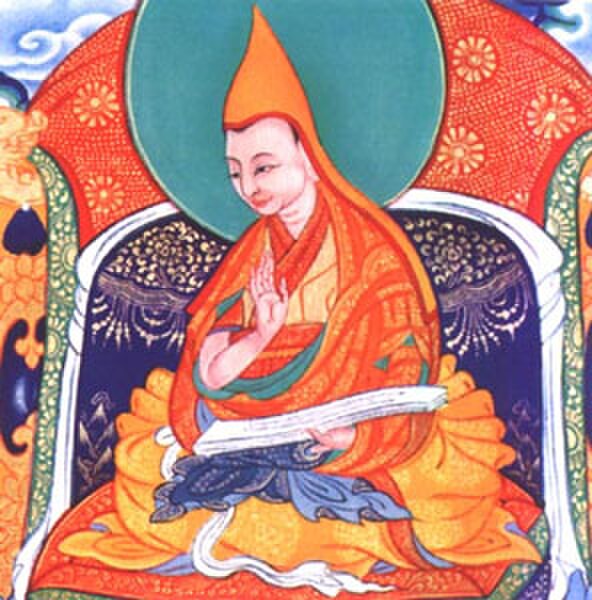The Shamarpa, also known as Shamar Rinpoche, or more formally Künzig Shamar Rinpoche, is the second oldest lineage of tulkus. He is one of the highest lineage holders of the Karma Kagyu school of Tibetan Buddhism and is regarded as the mind manifestation of Amitābha. He is traditionally associated with Yangpachen Monastery near Lhasa.
The 14th Shamarpa teaching
Mipam Chokyi Wangchug (1584–1630), the 6th Shamar Rinpoche, 16th-century painting from the Rubin Museum of Art
A tulku is a distinctive and significant aspect of Tibetan Buddhism, embodying the concept of enlightened beings taking corporeal forms to continue the lineage of specific teachings. The term "tulku" has its origins in the Tibetan word "sprul sku", which originally referred to an emperor or ruler taking human form on Earth, signifying a divine incarnation. Over time, this term evolved within Tibetan Buddhism to denote the corporeal existence of highly accomplished Buddhist masters whose purpose is to ensure the preservation and transmission of a particular lineage.
Tsongkapa, 15th-century painting, Rubin Museum of Art
Thangka of Tai Situ
Chogyam Trungpa Rinpoche, the 11th Trungpa tülku
Khedrup Gelek Pelzang, 1st Panchen Lama






